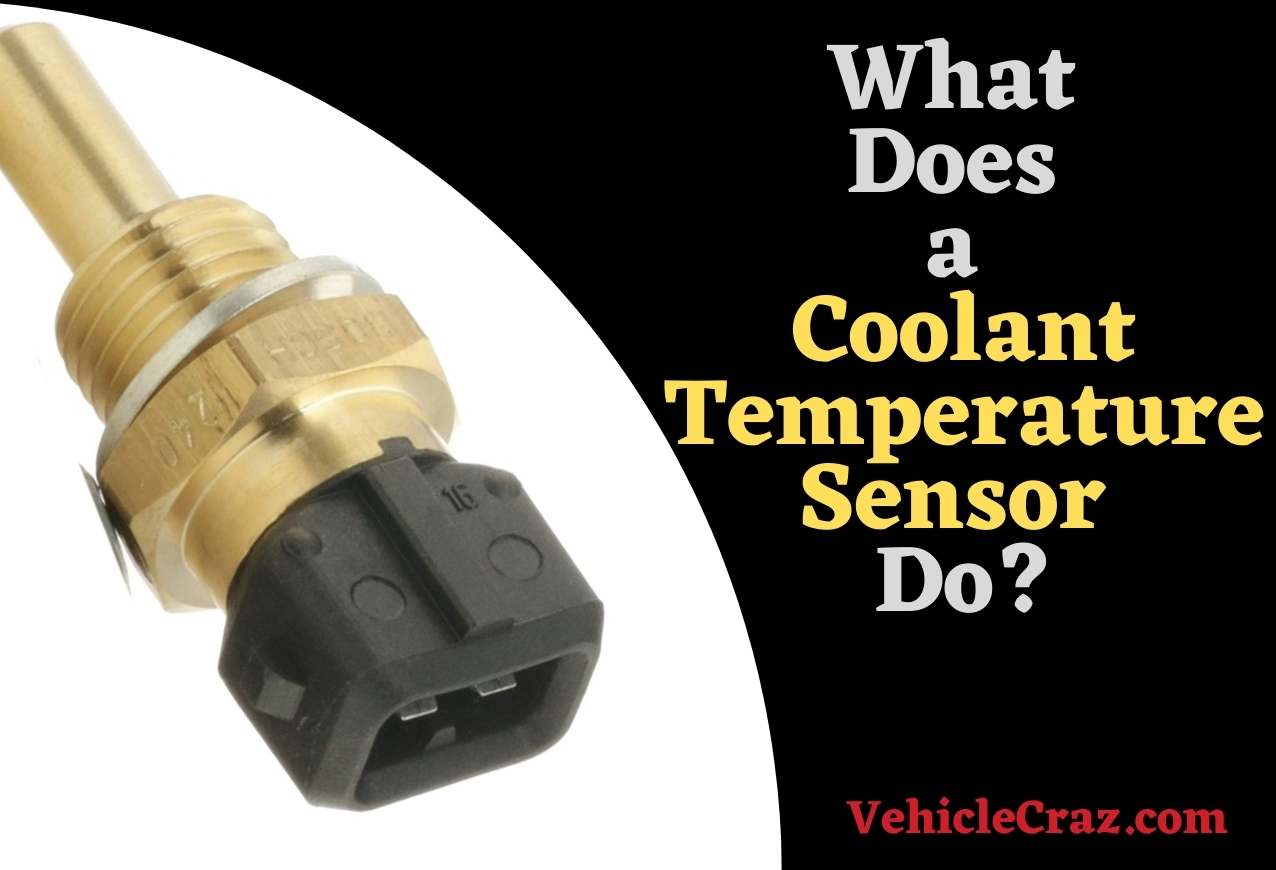What Does a Coolant Temperature Sensor Do?
What Does a Coolant Temperature Sensor Do? As the name suggests the coolant temp sensor monitors the temperature of the coolant. Need a thorough explanation or want to know more about coolant temperature sensors? You are in the correct place. Let’s get started.
What Does a Coolant Temperature Sensor Do?
Located near the engine’s thermostat or in the cylinder head or intake manifold, the coolant temperature sensor, also known as the CTS or ECT sensor monitors the temperature of the engine antifreeze and provides this information to the Engine Control Unit (ECU).
Then, the ECU uses this data to adjust various engine settings to ensure performance, efficiency, and emissions.
The coolant temperature sensor is typically a thermistor, which means its resistance changes with temperature. As the engine warms up, the resistance of the coolant temperature sensor decreases, and vice versa. The ECU uses the voltage signal from the sensor to determine the temperature of the coolant.
What Happens When Coolant Temperature Sensor Goes Bad?
When a coolant temperature sensor goes bad, it can cause several issues with the engine’s performance and operation. Here are some problems you would encounter with a bad coolant temp sensor.
Poor Fuel Economy
When a coolant temperature sensor malfunctions and sends incorrect signals to the engine control unit (ECU), it can disrupt the engine’s fuel management system.
Specifically, if the CTS erroneously indicates that the engine is colder than it is, the ECU may enrich the fuel mixture to compensate for what it perceives as a need for more fuel during cold starts or operation.
This richer fuel mixture means that more fuel is sent into the engine than is necessary for the actual operation. As a result, the engine will burn more fuel than required, leading to decreased fuel efficiency and increased fuel consumption.
Engine Overheating
The cooling system in a vehicle is designed to regulate the engine’s temperature and prevent overheating. As mentioned, the coolant temperature sensor plays a crucial role in this process.
When the coolant temperature sensor malfunctions, it may fail to accurately detect the coolant temperature. This can result in the ECU not receiving the correct signals to activate the cooling fan when needed or adjust the fuel mixture to help maintain the engine’s temperature.
Without the proper cooling fan operation, the engine may not be able to dissipate heat effectively, leading to overheating. Overheating can cause serious damage to the engine, including warping of components and even engine failure if not addressed promptly.
Difficulty Starting
When a coolant temperature sensor fails, it can cause difficulties during engine start. This is especially true when the engine is cold. This happens because the sensor is responsible for providing the engine control unit (ECU) with information about the engine’s temperature, which is crucial for determining the correct air-fuel mixture for starting.
If the coolant temperature sensor is faulty and provides inaccurate temperature readings to the ECU, the ECU may not adjust the air-fuel mixture properly for cold starts. This can result in either a too-rich or too-lean mixture, making it difficult for the engine to start or requiring longer cranking times before it starts.
A too-rich mixture can flood the engine with excess fuel, making it harder to ignite, while a too-lean mixture may not provide enough fuel for combustion, also making starting difficult. In either case, the engine may crank for an extended period before starting, or it may fail to start altogether until the sensor issue is resolved.
In addition, malfunctioning CTS can lead to poor engine performance, check engine light, and emission issues.
What Causes a Coolant Temperature Sensor to Go Bad?
Here are some causes of a bad coolant temp sensor.
Age and Wear
Like many electronic components, coolant temperature sensors can degrade over time. The sensor’s internal components, such as the thermistor, can wear out over time, leading to inaccurate readings and eventual sensor failure.
Contaminants
Contaminants in the coolant, such as dirt, debris, or engine oil, can accumulate on the sensor over time and interfere with its operation. These contaminants can cause the sensor to provide inaccurate readings or fail prematurely.
Corrosion
Exposure to moisture and coolant can cause the sensor’s electrical connectors or wiring to corrode over time. Corrosion can disrupt the electrical signal between the sensor and the engine control unit (ECU), leading to sensor failure or inaccurate readings.
Overheating
Excessive heat can damage the internal components of the coolant temperature sensor. Overheating can occur due to a malfunctioning cooling system, such as a stuck thermostat or a blocked radiator.
Related


I’m Alex, a seasoned mechanical teacher with over 20 years of hands-on experience in Australia. My passion for all things automotive has driven me to establish this blog, aiming to share my wealth of knowledge and expertise with fellow enthusiasts, DIYers, and anyone keen on understanding the mechanics behind the machines we rely on daily.







